A Three Dog Day In Yellowstone!
A Wolf Photo Safari in the Greater Yellowstone Ecosystem in Winter
Warning: This post contains graphic images of animals killing and eating other animals in the wild
A coyote in the Lamar Valley…where we were able to see all 3 canines who call the park home on our first day in Yellowstone National Park (click on any image in this post to enlarge)
The pressure was on! But in the end it was just a bit of good luck and my comfort with my high powered binoculars that had me be the first person in our group to spot wolves in the wild! When our group of 8 travelers with Natural Habitat Adventures Yellowstone Wolf Quest Photo Adventure completed our rapid covid tests and met for dinner, our guides Kurt Johnson and Jonathan Long asked everyone to share one interesting thing about themselves. Jeff decided he should share that I am particularly good at spotting wildlife.
Natural Habitat’s written departure materials for our early March trip to spot and photograph wolves and other wildlife in Yellowstone against a winter backdrop were very clear…animals are not always spotted and if they are, it’s often at a great distance.
We left from Bozeman MT to enter the park at the only open entrance in winter, the North Entrance, near the town of Gardiner, near the Mammoth Hot Springs. Our plan was to traverse the northern road of the park over the next 5 days, staying 2 days in Cooke City and 2 days in Gardiner, while tracking wolves and other wildlife from Natural Habitat’s purpose built specialized vans in Yellowstone. Nat Hab also has access to the Department of Interior’s Yellowstone Wolf Project (YWP) staff radio communications.
Natural Habitat’s specially built vans feature roof hatches for photographing wildlife without disturbing them, and our trip provided 2 driver guides, adept at spotting and explaining wildlife and assisting guests with their photography and the use of provided spotting scopes. We were also followed by a logistics person, and had use of Nat Hab’s other equipment such as boots, parkas and binoculars.
The YWP uses collars and telemetry, as well as planes and eyewitnesses, to monitor the activities and health of the wolves which were once eliminated from the area by hunting and were restored to Yellowstone in 1995 amid ongoing controversy. In Yellowstone there are are dozens of wolf project NPS employees, volunteers and other researchers who have “wolf radios” as did our guides. These channels are not shared publicly to avoid hunters tracking wolves to park borders in hopes to legally hunt them if they move outside the park.
The valley where we stopped to enjoy the beautiful view, soon became the scene of wild drama that we were able to witness!
We had barely entered the park, with high hopes, low expectations, and very little experience in the landscape, but we never could have expected what happened next! The radios were quiet when we arrived at this site, called Hell Roaring Creek, just to see the “scenery”. Our guide Jon said, “always scan to see if you see anything” and of course, that’s what I was doing.
Suddenly, I saw what I thought was wolves trotting in a perfect line down the snow pack. Of course, I’d only been in the park an hour, and needed to be sure I wasn't seeing some of the thousands of bison that roam the park. But then I excitedly started counting the number of wolves I was seeing and sharing landmarks for others to train cameras and spotting scopes on them. In an instant the wolf radio was crackling with excitement and researchers and guides with more experience were following this large pack moving quickly through into the trees.
Video Below provided by NHA Guides
As the wolves moved quickly, we lost them into a copse of trees that made spotting them impossible.
Elk seen at the entrance to YNP, a smaller bull elk can be seen to the right of this photo. The bull the wolves brought done was much larger!
Soon a researcher noticed the wolves emerge into view again, and was excitedly noting they had pulled down a bull elk! They believed this to be the so-called Rescue Pack of 12 animals, researchers there were moving their scopes, struggling to get a view at great distance and with shrubs and trees blocking the view. The radio crackled with the news and more wolf watchers, staff and volunteers, as well as another wolf tour group, was crowding the overlook to the kill sight in minutes! I’m sure one of those pros would have spotted them eventually, but the fact that I was the first was amazing for me! What we couldn’t have known when we first spotted them, was that they were actively hunting.
Watching the Rescue Pack headed to the trees, tourists, guides, and researchers were all trying to get a good view. In the winter, prey animals stay at lower elevation out of the high snow, and wolves and other predators will have an easier time finding them. In addition the ease of spotting moving animals against the white snow and lack of summer crowds, makes winter wildlife watching very rewarding!
Soon we could spot that the wolves were moving in a very organized way, separating themselves, and fanning out. Our guides and the wolf project people say this is a step to surround their faster prey, which they will take turns running down in the deep snow, until they’ve worn it out enough to catch up to it.
This enlarged image shows the wolf pack goring the bull elk. Below are other enlarged images where you can see the elk attempting to raise its head and some wolves put the head back down, as the pack continued to feed on the elk.
As exciting as it was to witness this, it was also emotionally difficult to watch. We all quickly realized how harsh life is in the natural world, where the winter environment adds more complexity to the challenging environment. It’s rare for wolves to take down a bull elk. Because of it’s huge antlers, they can’t take it by the throat and suffocate it immediately by crushing the windpipe, the way they would a cow elk. Instead they grab it by the back legs (called “hamstringing”) till it’s down then rip open it’s flank and start eating it before it’s even passed.
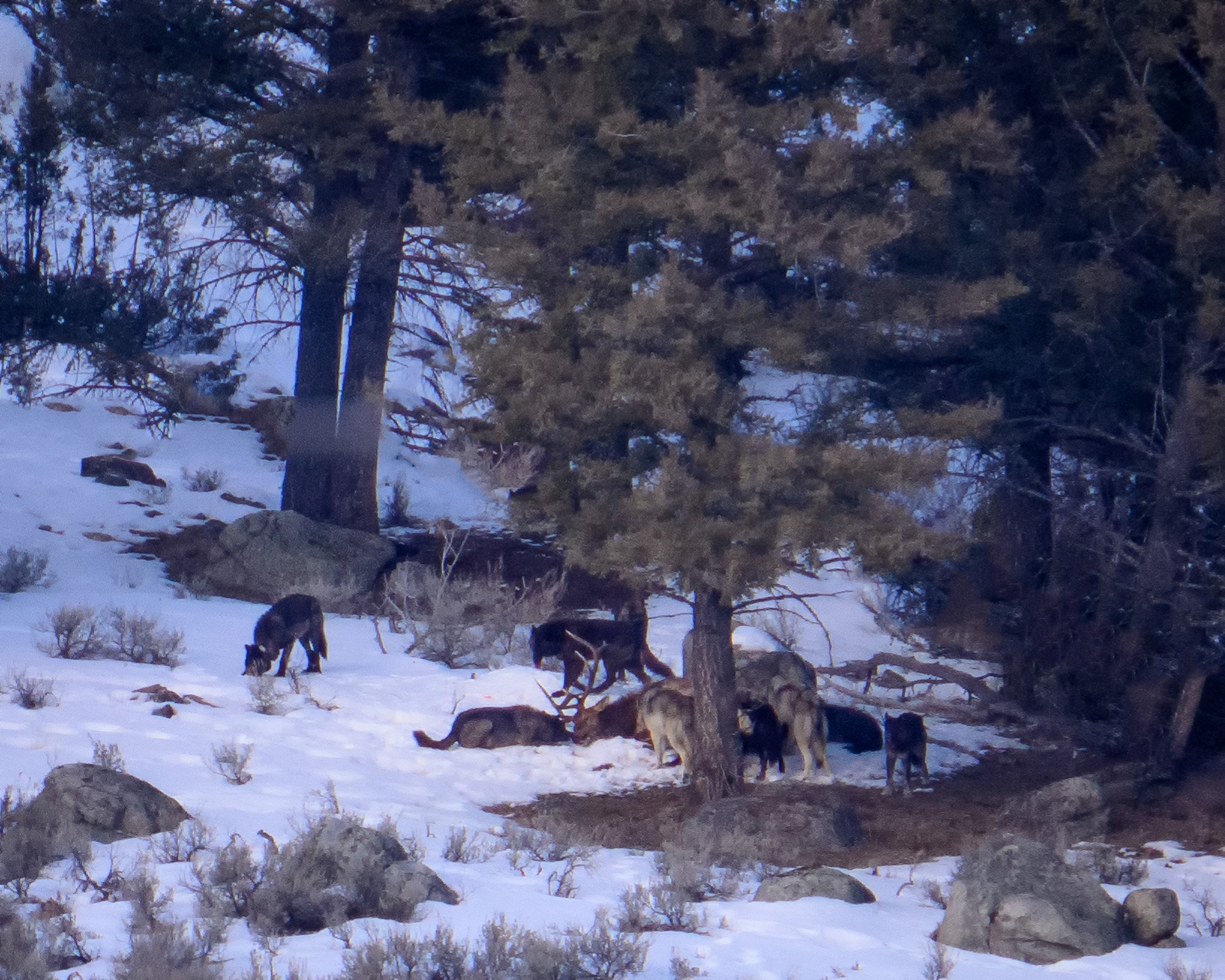
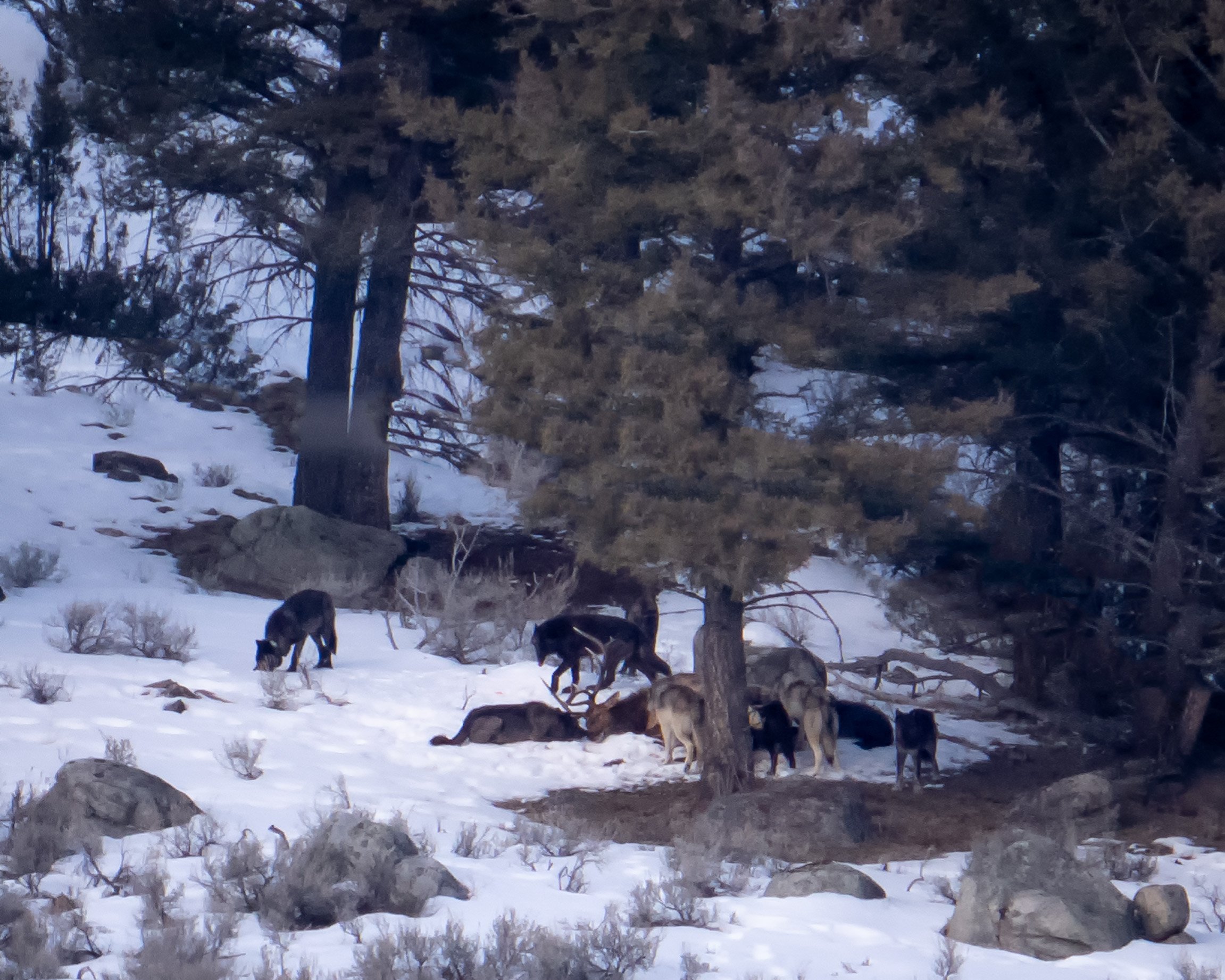

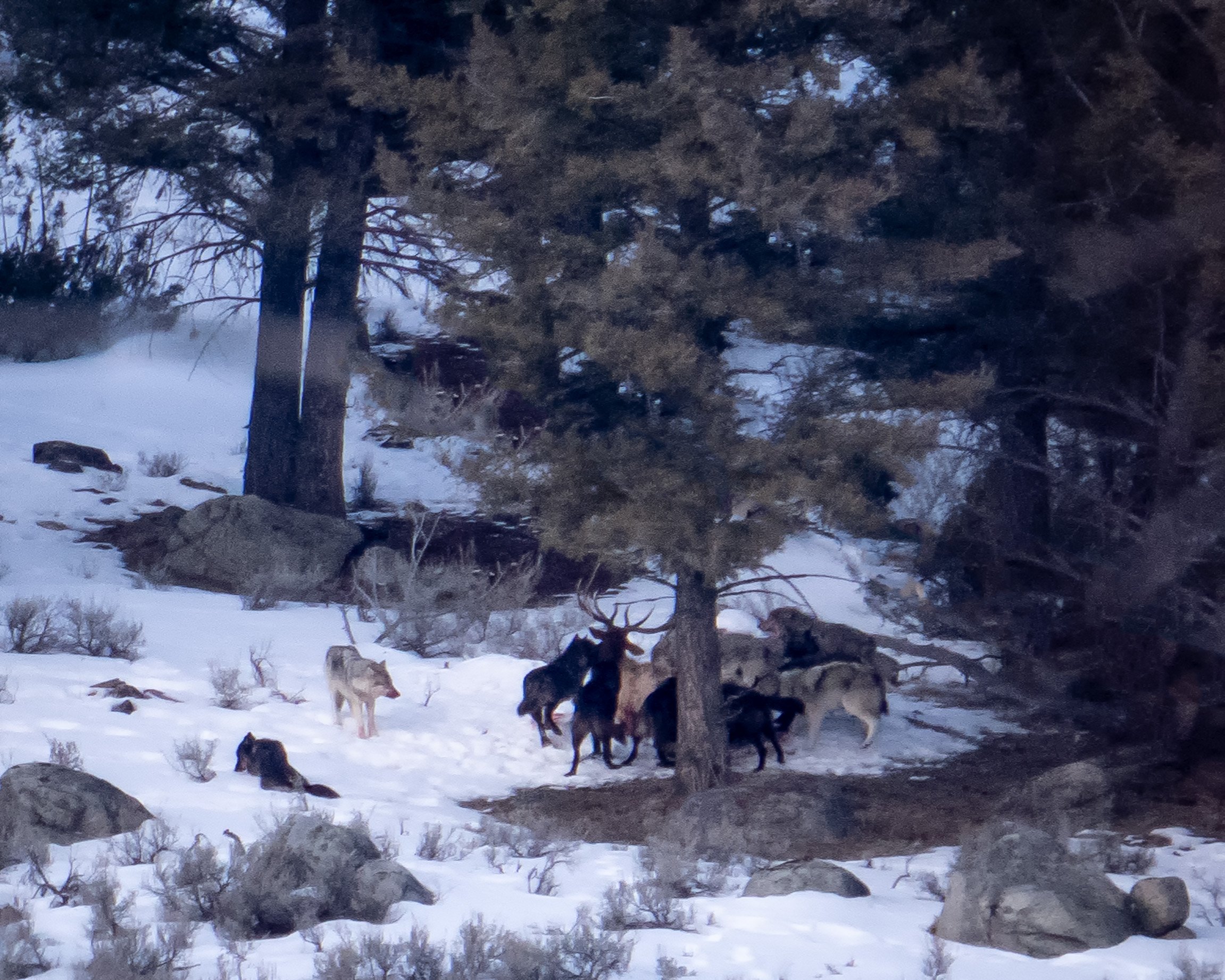
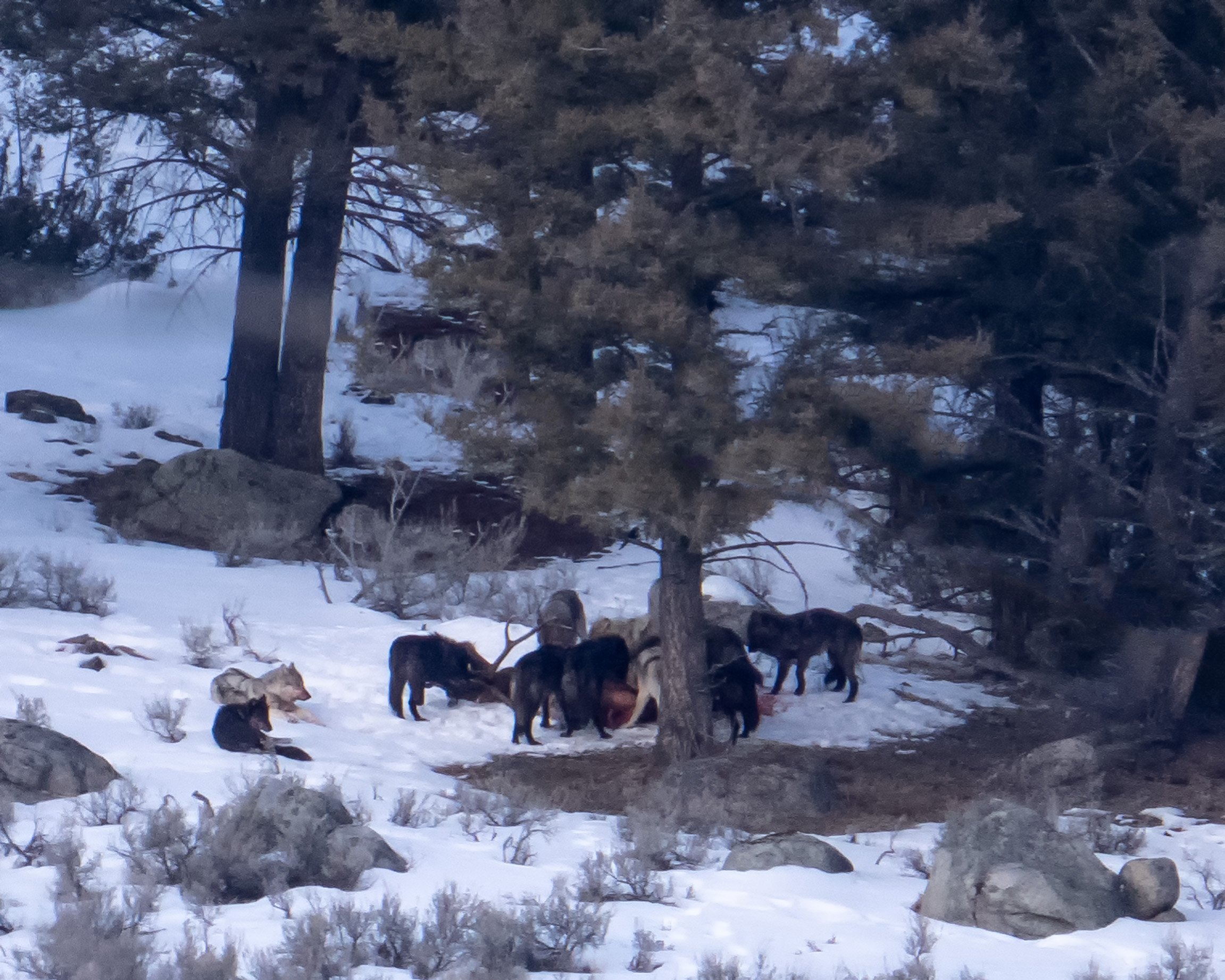
We saw in the scope. the elk try to lift its head and attempt to get up for a few minutes before it finally passed. It was no match for a carefully coordinated attack by a dozen wolves! It was the most brutal thing I’ve ever seen in real life. But also it was amazing to witness these powerful animals at work surviving in incredibly harsh conditions.
The following is a time lapsed (edited) of the pack at the kill site, that video our guides were able to capture on their phone via Bluetooth from the spotting scope. Be warned that although it’s at quite a distance away, it is a brutal scene, and quite graphic. We were provided a unique opportunity to watch this pack of wolves hunt and take down an animal they need for their survival.
Video Below Provided by Natural Habitat Adventures Guides
Some of the interesting things to watch in this video is how some lower ranked wolves are not allowed to eat from the elk until the more senior ranking wolves have had their fill. Those beta wolves can be seen guarding the kill site, and early on forcing the elk’s head back down. Later in the video, some wolves have had their fill, and you’ll see them roll in the snow to wash off the blood and rest. Some of the beta wolves will approach the alphas, as a puppy would. licking their faces. Also you’ll notice that many other predators will begin approaching the kill site, waiting for their turn. You can see magpies in this video.
For the next 3 days a researcher was working that Hell Roaring Stream kill site to see what other animals benefit from the kill after the wolves have finished with it. Later in the day we saw, golden eagles, bald eagles and magpies working on the carcass to get food.
Shortly after the amazing wolf pack kill sighting, or guides joked that we may have had the highlight of our trip in the first hours…and while we didn’t get to see wolves this close or engaged in behavior this dramatic for the rest of the trip, we were able to experience Yellowstone and many more of the animals that live there in the winter.
On our way to Cooke City, we found a coyote eating from a mule deer carcass believed to have been brought down, possibly by a different pack of wolves earlier in the day. Spotting these raptors and other carnivores, such as this raven, waiting nearby is often a sign that the wolves have hunted and killed something.
To complete the trifecta and make it a “three dog day”, we spotted a fox on the side of the road on our way to Cooke City. Although he was too elusive to photograph from the moving van, he did show up later (or a friend?) to beg for scraps at a bakery in Cooke City and was happy to pose for our group.
In addition to our three dog day, mother nature had one more little predator for us to see! We were scheduled to end our day in Silver Gate with a discussion and slide show with Yellowstone photographer and National Geographic contributor, Dan Hartman. When we arrived, Dan greeted us enthusiastically in his driveway, excited we’d arrived in time to see a Northern Pygmy Owl who had just captured a Gray Crowned Rosy Finch almost his owns size and was eating it in the tree near Dan’s gallery. We all clambered out into nearly hip deep snow to see one last predator at work before the light faded on our three dog day.
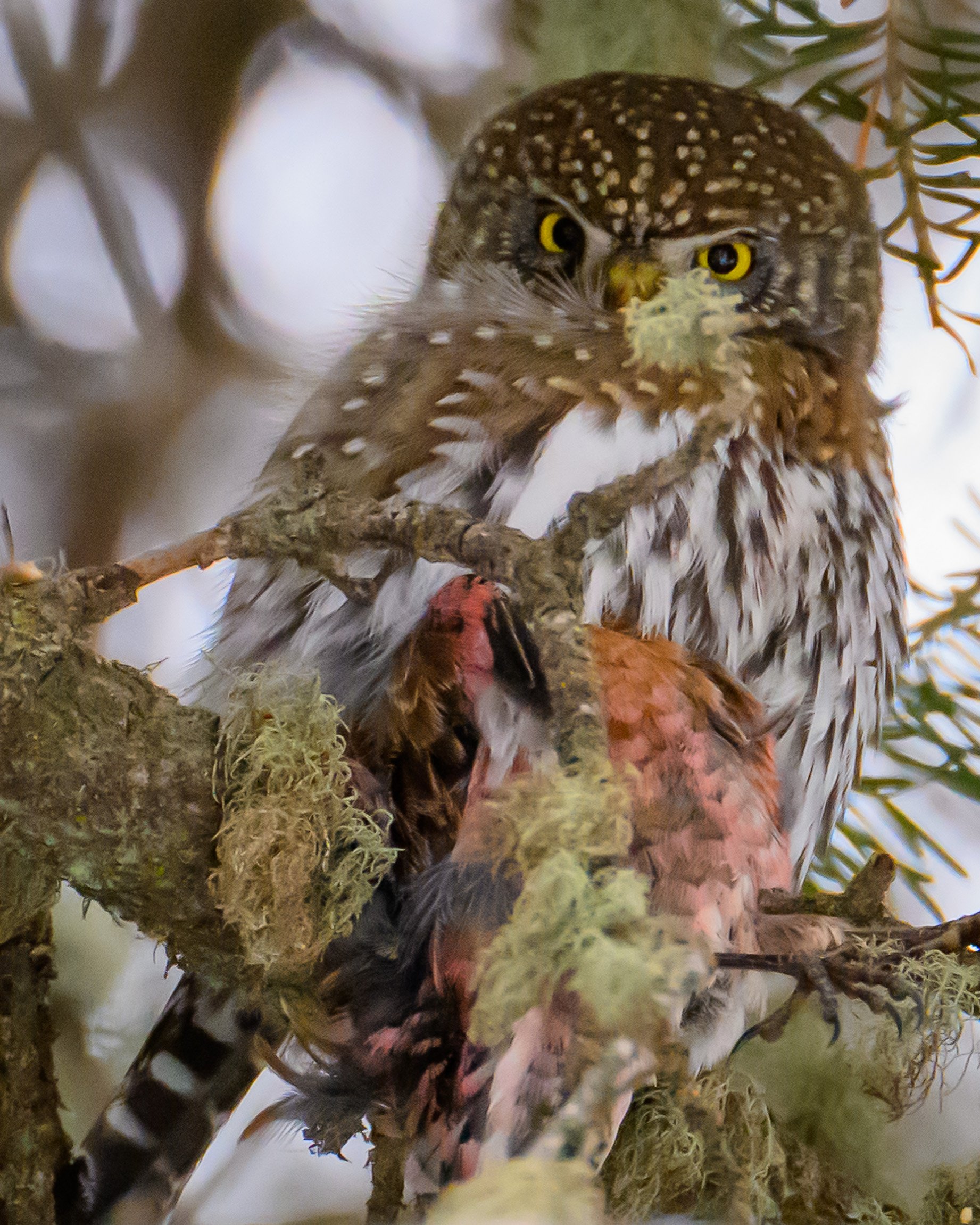
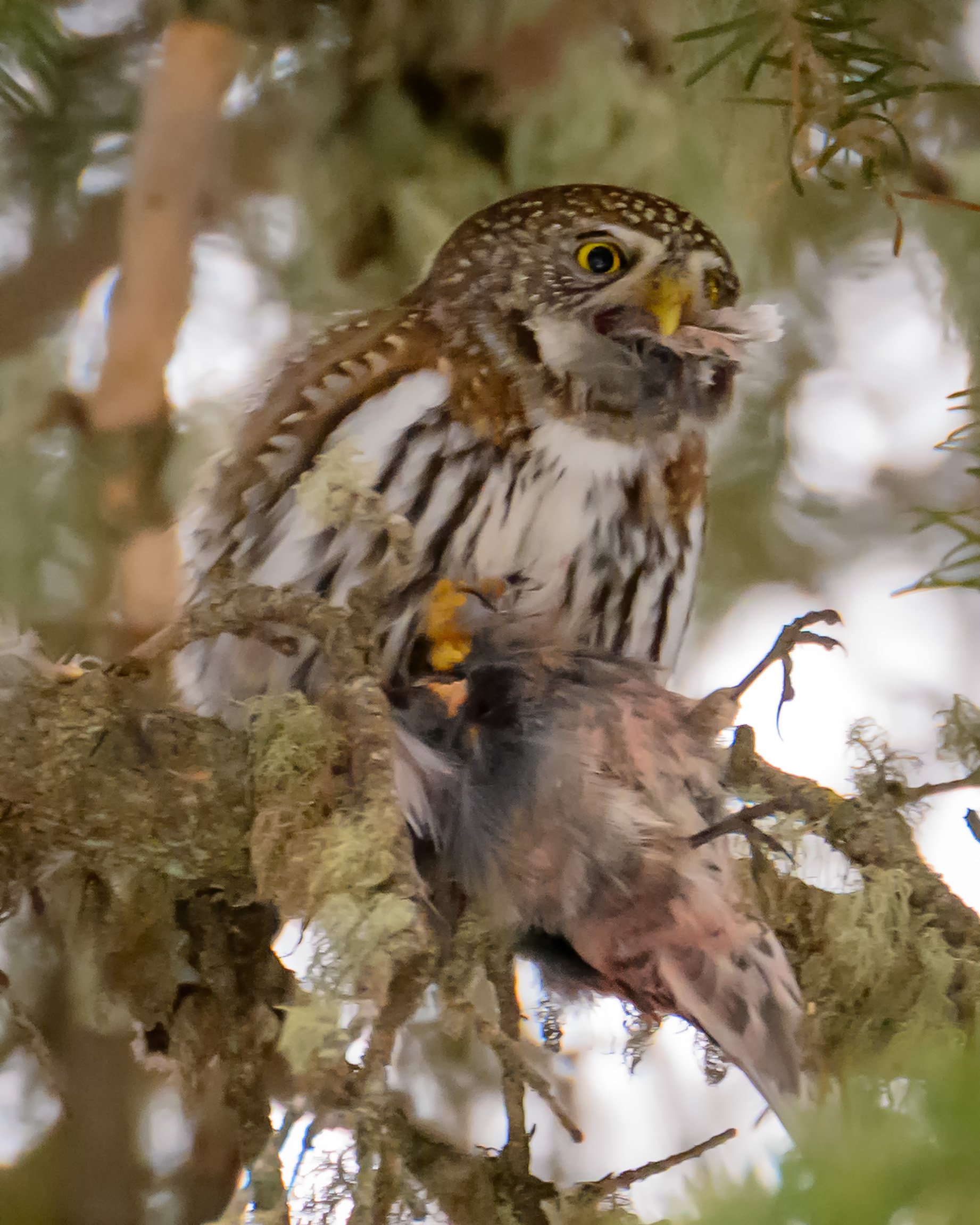
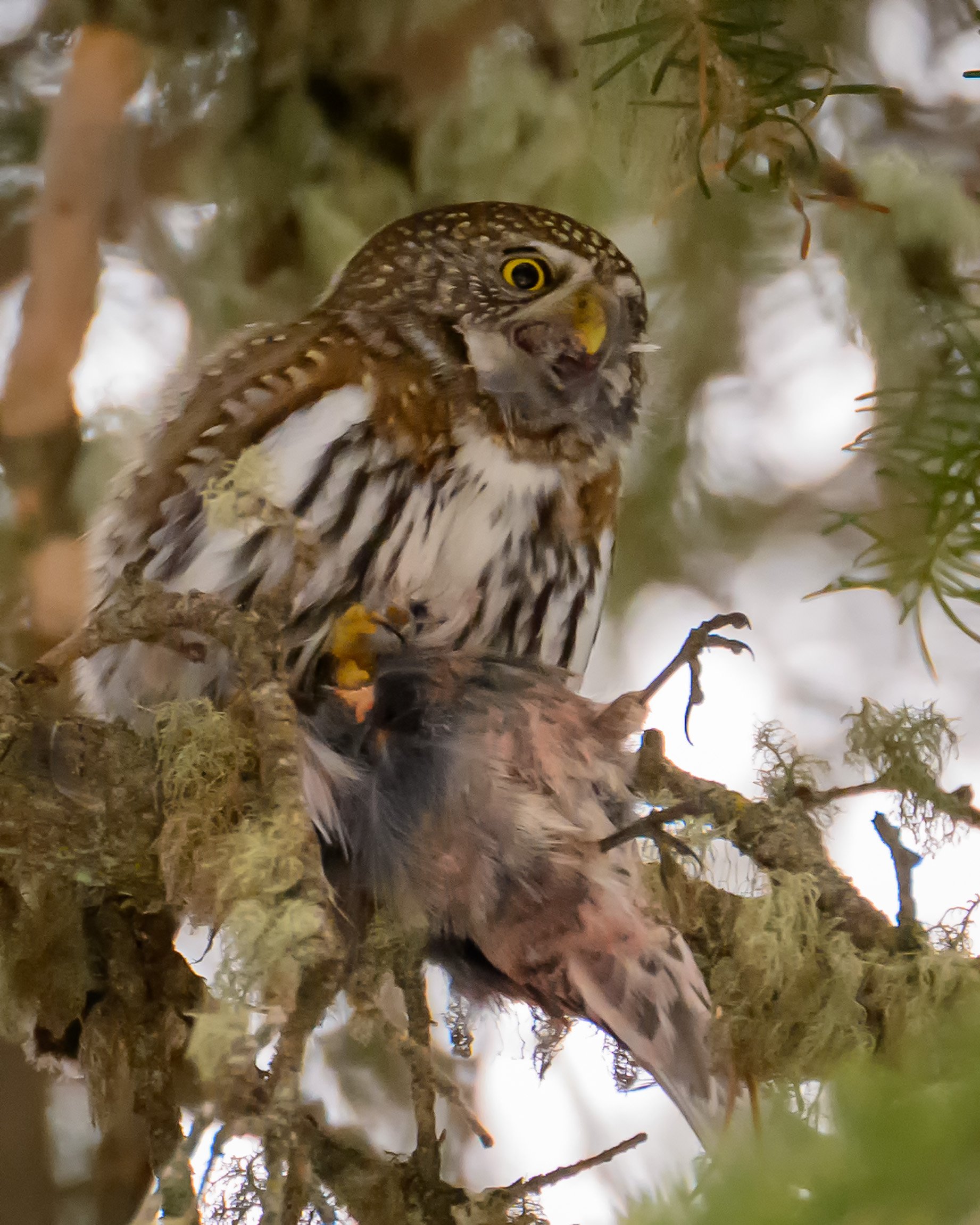
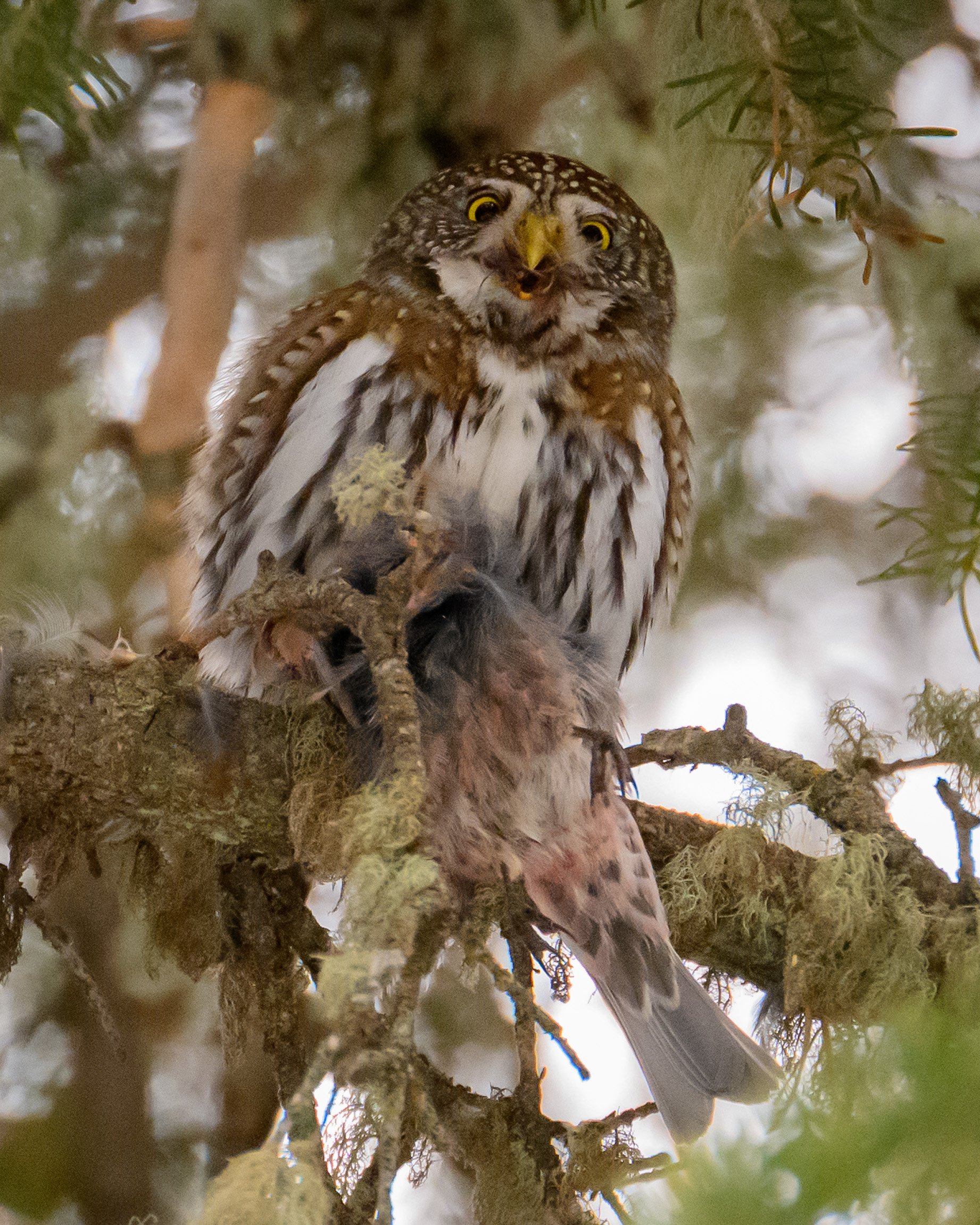
Photos and video by Jeff and Kathy Klofft; except where noted

